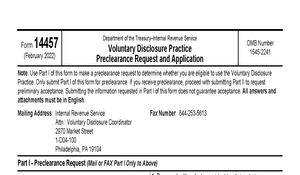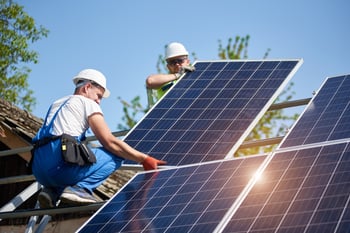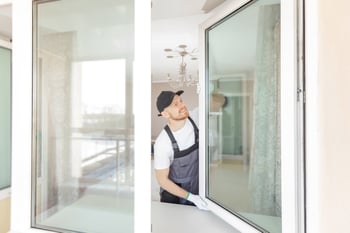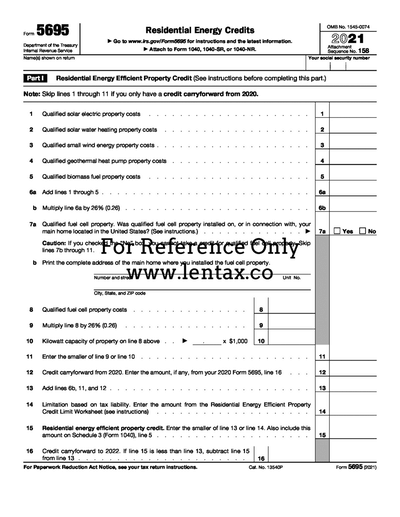
What Is The Purpose Of This Form?
Use form 56951 to figure the amount of tax credits you can take on this year's federal tax return related to 1) residential energy efficient property2 and 2) residential energy efficient improvements or residential energy property costs you paid during the year for your home. This form is also used to take any residential energy efficient property credit carryforward from the prior tax year and to determine if you can carryforward any amount to the next tax year.
Your home can be any one of the following and doesn't have to be your main home:
- Your house
- Your houseboat
- Your mobile home
- Your cooperative apartment
- Your condominium
- Your manufactured home3
You must reduce the basis of your home by the amount of any credit allowed. If more than 20% of your living place is used for business, only the portion of the costs that is allocable to the nonbusiness use can be used to determine the amount of the credit.

For the residential energy efficient property credit, the amount of the credit is 26% of your costs of the following energy efficient property (for qualified fuel cell property, the credit is limited to $500 for each one-half kilowatt of capacity):
- Qualified solar electric property (for example, solar panels, solar roofing tiles and shingles excludes roofing for decks or rafters)
- Solar water heating property4 (must derive 50% of energy from sun)
- Small wind energy property (for example, wind turbines)
- Geothermal heat pump property5 (must use ground or ground water as thermal energy source)
- Fuel cell property6 (for example, fuel stack assembly and plant components chemical to convert fuel to electricity)
You can include any labor costs for onsite preparation, assembly, or original installation of these properties and for piping or wiring to interconnect the property to your home. Generally, for purposes of qualifying for this credit, you can rely on the manufacturer’s certification in writing that a product is qualifying property for the credit. Keep it for your records, don't include it with your tax return.
For the residential energy efficient improvements or residential energy property credit, the amount of the credit equal to the sum of:

However, this credit is limited as follows, after 2005:
-
A total combined credit limit of $500 for all tax years
-
A combined credit limit of $200 for windows for all tax years
-
For 2020, the credit limit for residential energy property costs of $50 for any advanced main air circulating fan; $150 for any qualified natural gas, propane, or oil furnace or hot water boiler; and $300 for any item of energy efficient building property.
What Are Latest Developments Relevant To Me?
The Taxpayer Certainty and Disaster Tax Relief Act of 2019. The act extended the nonbusiness energy property credit to property placed in service after 2017 and before 2021 and made some adjustments to the electric heat pump water heater and natural gas, propane, or oil water energy yield factors for them to be considered energy-efficient building property.
What Does The Form Look Like?
Looking for help with this form? Click the link or click on the image to learn more.
We Hope This information Was Helpful.
If you found this information helpful, share it with others and let us know your thoughts about it by sharing your comments below.
Reference
1IRS Form 5695 Residential Energy Credits
2The residential energy efficient property credit is available for both existing homes and homes being constructed. The residential energy efficient improvements or residential energy property credit is only available for an existing home or for an addition or renovation to an existing home, and not for a newly constructed home.
3Your manufactured home must meet the safety standards of the Department of Housing and Urban Development (HUD) Federal Manufactured Home Construction and Safety Standards
4To qualify for the credit, the property must be certified for performance by the nonprofit Solar Rating Certification Corporation or a similar entity endorsed by the state where the property is installed. Solar Rating & Certification Corporation (ICC-SRCC™) is the leading certifier and standards developer for solar heating & cooling products in North America, see https://solar-rating.org/.
5To qualify for the credit, the geothermal heat pump property must meet the requirements of the Energy Star program and must be in effect at the time of purchase, see https://www.energystar.gov/products/geothermal_heat_pumps.
6To qualify for the credit, the fuel cell property must have a nameplate capacity of at least one-half kilowatt of electricity using an electrochemical process and an electricity-only generation efficiency greater than 30%.
7The qualified energy efficiency improvements include any of the following building envelope components installed on or in your main home that you owned during the tax year located in the United States, the original use of the component begins with you, the component can be expected to remain in use at least 5 years, and the component meets certain energy standards: any insulation material or system that is specifically and primarily designed to reduce heat loss or gain of a home when installed in or on such a home, exterior windows and skylights, exterior doors, any metal roof with appropriate pigmented coatings or asphalt roof with appropriate cooling granules that are specifically and primarily designed to reduce the heat gain of your home. Don't include amounts paid for the onsite preparation, assembly, or original installation of the building envelope component.
8The residential energy property include any of the following new qualified energy property that is installed on or in connection with your main home that you owned during the tax year located in the United States: certain electric heat pump water heaters, electric heat pumps, central air conditioners, natural gas, propane, or oil water heaters, and stoves that use biomass fuel, qualified natural gas, propane, or oil furnaces and qualified natural gas, propane, or oil hot water boilers, certain advanced main air circulating fans used in natural gas, propane, or oil furnaces. Include any labor costs properly allocable to the onsite preparation, assembly, or original installation of the energy property.


